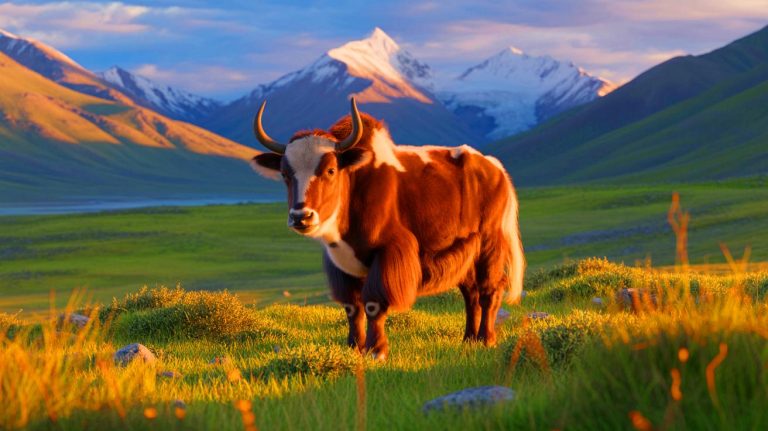| IN A NUTSHELL |
|
In a groundbreaking scientific achievement, Chinese researchers have successfully cloned a yak, marking a significant milestone in livestock breeding technology. The cloned calf, delivered via C-section on July 11 in Tibet, weighs in at an impressive 73.9 pounds and is reportedly in excellent health. This advancement not only underscores China’s growing capabilities in biotechnology but also opens new doors for enhancing agricultural productivity in high-altitude regions like Tibet. As traditional livestock breeding faces numerous challenges, innovations like these offer promising solutions for sustainable development.
The Cloning Process: A New Frontier in Biotechnology
Chinese scientists employed a fascinating technique known as somatic cell cloning to produce the world’s first cloned yak. This method involves transferring DNA from a body (somatic) cell into an egg cell that has had its nucleus removed. The ability to reprogram adult cells to develop into a full organism is a remarkable feat of genetic engineering, echoing the pioneering work done on Dolly the sheep in the 1990s.
Somatic cell cloning allows researchers to select and propagate animals with desirable traits, such as increased size and enhanced milk production, through whole-genome selection. This precision breeding technique is particularly crucial in Tibet, where yaks play an indispensable role in the local economy and ecology. By creating yaks that are stronger, more productive, and disease-resistant, scientists aim to bolster food security and improve the livelihoods of communities dependent on these animals.
The Importance of Yaks in Tibetan Culture and Economy
Yaks are vital to life on the Tibetan Plateau, having been domesticated for thousands of years. Their unique ability to thrive at high altitudes where other livestock cannot makes them essential for the survival of local communities. These animals provide meat, milk, and fuel, and serve as reliable pack animals, enabling the transportation of goods across Tibet’s challenging terrain.
Beyond their economic contributions, yaks are integral to the region’s cultural heritage. They support traditional herding lifestyles and participate in religious and cultural practices. Furthermore, yaks contribute to maintaining the ecological balance of Tibetan grasslands, grazing sustainably, and promoting biodiversity. The introduction of cloned yaks could enhance these roles, ensuring that yaks continue to support both the cultural and economic fabric of Tibetan society.
Lessons from Dolly: Pioneering Cloning Technology
The successful cloning of a yak in China draws inspiration from the iconic achievement of cloning Dolly the sheep in 1996. Dolly was the first mammal to be cloned using somatic cell nuclear transfer, a process that demonstrated the potential of cloning technology. Her birth proved that specialized adult cells could be reprogrammed to create a new organism, challenging existing notions in the field of genetics and biotechnology.
Dolly’s creation spurred global interest in cloning, highlighting both its scientific potential and ethical implications. Her legacy continues to influence modern cloning research, as scientists explore ways to harness this technology for agricultural and medical advancements. The cloning of a yak in Tibet is a testament to the enduring impact of Dolly’s pioneering journey, demonstrating how lessons from the past can shape the future of science.
Future Prospects: Cloning and Sustainable Development
The advent of yak cloning opens up new possibilities for sustainable development in high-altitude regions like Tibet. By enhancing the genetic traits of yaks, researchers aim to improve agricultural productivity and ensure food security for local communities. Cloning technology could also play a crucial role in preserving endangered species and biodiversity, offering a lifeline for ecosystems threatened by climate change and human activity.
As cloning technology advances, it is essential to consider the ethical dimensions of its application. Balancing scientific innovation with ethical responsibility will be key to ensuring that cloning contributes positively to society. How can we harness the power of cloning to address global challenges while respecting the complex ethical questions it poses?
Did you like it? 4.5/5 (24)





Wow, cloning a yak at 12,000 feet? That’s udderly amazing! 🐮
How does cloning affect the genetic diversity of yaks in the long run?
Is it safe to eat meat from a cloned yak, or are there health risks?
Thank you for this fascinating article! It’s incredible what science can achieve!
Why clone a yak specifically? Are they facing extinction?
I’m curious about the ethical implications of this. Is it right to clone animals? 🤔
Cloning a yak in the Himalayas sounds like a sci-fi movie plot!
Does this mean we’ll have cloned yak cheese soon? 😋